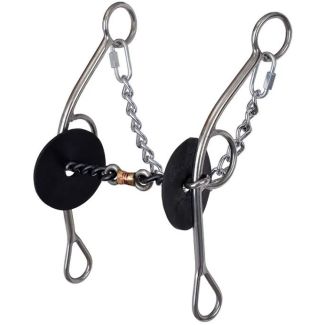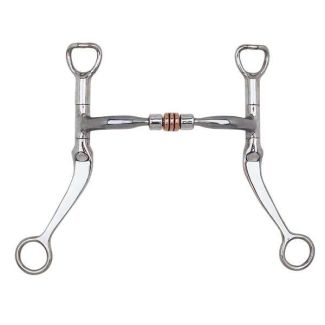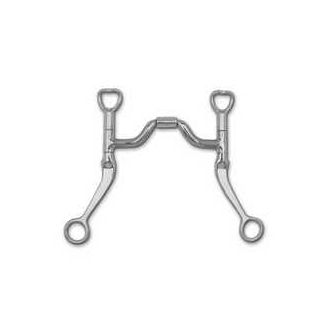Bits
Western horse bits are specific types of bits used in Western riding disciplines, such as reining, cutting, and working cow horse. These bits are designed to provide precise and clear communication between the rider and the horse.
Some common types of Western horse bits include:
1. Snaffle Bit: A popular choice for many Western riders, the snaffle bit has a joint in the middle that applies direct pressure to the horse's mouth. It can have various cheek designs, such as D-ring, O-ring, or loose ring.
2. Curb Bit: This bit has a shank that extends below the horse's mouth and applies leverage in addition to direct pressure. It has a curb chain or strap that helps control the downward rotation of the bit.
3. Tom Thumb Bit: A mild curb bit with relatively short shanks, the Tom Thumb is sometimes used for training or introducing young horses to bit pressure. However, its leverage action can be harsh if used incorrectly.
4. Argentine Bit: Also known as a "gaucho" or "fileteado" bit, the Argentine bit has a jointed mouthpiece and shanks that swivel independently. It allows for direct pressure and lateral flexion, ideal for training and schooling purposes.
5. California Shank Bit: This bit has long shanks that provide significant leverage. It is commonly used in the reining discipline. The mouthpiece can vary, but it often has a Billy Allen or Correction port for tongue relief and greater control.
6. Billy Allen Bit: Named after its creator, this mouthpiece reduces the "nutcracker" action found in traditional jointed snaffle bits. It has a center barrel that rotates but does not have any broken or moving parts.
It is essential to choose a Western horse bit that is appropriate for the horse's level of training, experience, and mouth conformation. It is also crucial to understand how different bits work and their potential impact on the horse's comfort and communication. Professional guidance from a knowledgeable trainer or riding instructor is advised when selecting and using western horse bits.












